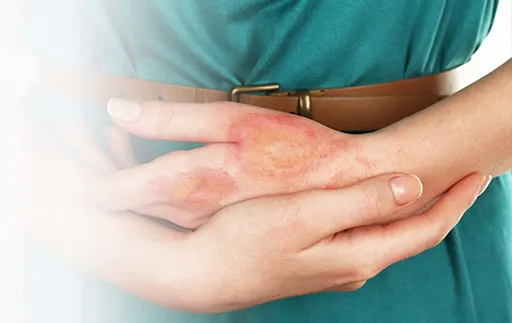
Reparative surgery
Burns reparative surgery Tunisia
Whether large or small, burns can leave lasting scars. The plastic surgeons who specialize in burns at El Yosr International clinic in Sousse, Tunisia work with a competent medical team to ensure that all burns receive the best possible treatment. Superficial burns (1st and 2nd degree) often heal with dressings. Deeper burns (3rd and 4th degree) often require surgery to heal them. Our surgeons master the latest surgical techniques to treat acute burns, skin grafts and flaps.

Burn treatment and plastic surgery
Burn first aid is extremely important in reducing the risk of the burn getting worse and causing serious scar problems.
Superficial burns (1st and 2nd degree)
Superficial burns affect the upper part of the skin (the epidermis and the upper part of the dermis.) They are sometimes called 1st degree burns (epidermis only) and 2nd degree burns (epidermis and upper dermis) Superficial burns are often quite painful (because the small nerves in the skin are exposed.)
Superficial burns (1st degree) are very common. Sunburn is a typical first degree burn. The skin is red, swollen, and painful. 2nd degree burns are slightly deeper than 1st degree burns and are also painful. The skin is red, swollen, and may be shiny and moist.
All burns should be treated as quickly as possible with fresh running water for first aid. This should be done for twenty minutes as soon as possible after the burn. First aid is useful for up to 3 hours after the burn, it cools the skin and also provides some comfort. There is very good evidence that burns treated with good first aid require less surgery and have less scarring. Cover wounds with clean "non-adherent" dressings and seek additional care from your GP, emergency department, burn clinic or El Yosr International Clinic. With special dressings, these wounds are likely to heal with minimal scarring or pigmentation issues. Although superficial (and very unlikely to require surgery), these burns still require specialist nursing, occupational therapy, and physiotherapy.
Deep burns (3rd and 4th degree)
Deep burns involve the entire thickness of the skin (often referred to as 3rd degree burns), or in the fat and muscles under the skin (4th degree burns.) These are full thickness wounds that completely destroy the two layers of the skin (epidermis and dermis). The burn area may appear white or black and charred. These burns may not hurt very much because the nerves have also been damaged. However, third and fourth degree burns are often accompanied by second degree burns around the edges - and these can be painful.
As with superficial burns, these injuries require 20 minutes of cool running water for first aid and a special dressing. Antimicrobial dressings are often used in burns to reduce the risk of infection from the burn. Silver dressings have antimicrobial properties and are often the dressing of choice. Full-thickness burns will almost always require surgery to heal them, and to minimize scarring and deformity. The majority of cases are treated with skin grafts.
In very deep wounds where a skin graft is unlikely to be successful, the surgeon uses innovative techniques such as biological dressings, dermal matrices, perforator flaps and free flaps to achieve the best possible result. Following these burn repair surgery interventions, nurses, physiotherapists and occupational therapists will be able to participate to ensure that the result is the best possible. The surgeon will examine you for several months after your burn surgery to make sure the scars are fading properly.
Reconstructive surgery for burns Tunisia
As a result of burns (which may or may not have undergone surgery), patients may be troubled by their scars. Our plastic surgeons have extensive experience in surgery for burn scars (and other types of scars).
Repair surgery for scars is performed by a multidisciplinary team including nurses and therapists. Burn repair is offered to patients who have functional difficulties with their scars (contractures) and to patients who are concerned about the aesthetic appearance of their burn scars.
Release from contracture
Following a burn, the scar can tighten and cause contracture. It can affect a joint (finger, elbow, foot, etc.) or can also affect the normal functioning of the eyelids, mouth, breasts, genitals, etc. During surgery, this tight scar contracture will be cut, opened and resurfaced with skin grafts, matrices or dermal flaps.
Skin grafts
Other skin grafts can be used to 'fill in the defect' after release from the contracture, when the scar area is rougher.
Z-plasty and other "local flaps"
When a skin graft is likely to 'contract' or will not provide sufficiently flexible tissue, a local flap of nearby tissue is used to correct a burn scar.
Perforating shutters
This is more complex flap surgery based on tiny blood vessels that can be moved into an area of bothersome scar. Our surgeons have a particular interest and expertise in these perforator flaps and use them in many areas of their reconstructive plastic surgery practice.
Free flaps
Free flap surgery transplants skin and subcutaneous fat from an area of the body to an area in need of scar repair. Microsurgical techniques are required for the surgeon to dissect tissue on individual arteries and veins and then reconnect them to the arteries and veins at the scar site. Sometimes muscles or bones are also moved to reconstruct very complex defects. These surgeries are complex (and like perforator flaps), the surgeons at the Clinique El Yosr Internationale in Sousse, Tunisia have considerable experience in this field, they also use them in the reconstruction of the upper and lower limbs and craniomaxillofacial reconstruction. / head and neck.
Tissue expanders
Tissue expander scar repair surgery is a useful procedure that allows the surgeon to stretch or enlarge the normal skin that is next to a scar, and then use that expanded skin to replace a scar. scar area. This is a two-step surgery.
Fat graft
In this surgery, part of the fat is taken (from the lower abdomen / buttocks / thighs) and is injected into the scar area. This helps "fill in" a burn scar area and also improves the overall quality and appearance of the scar.
Please do not hesitate to contact us with any additional questions you may have on burn repair surgery. Our team will be happy to answer all your concerns.


